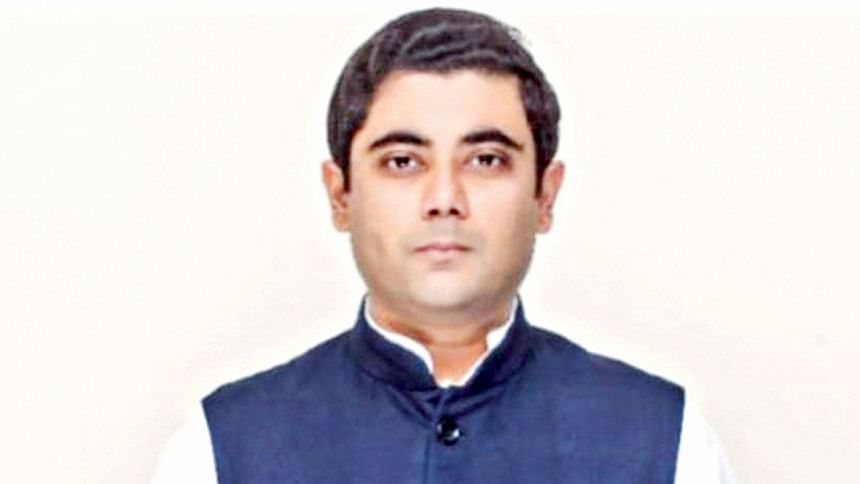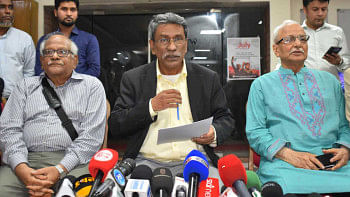Budget embraces correct strategic direction

The proposed national budget for FY25 has remained a widely speculated topic for the people of this country. Bangladesh has been navigating a precarious global economy over the last 24 months, and the economic aftereffects of Covid-19 and the Ukraine-Russia have not only complicated macroeconomic management but created widespread concerns across both domestic and international actors.
This has manifested in international agencies downgrading Bangladesh's credit ratings. For instance, Fitch Ratings recently downgraded Bangladesh's long-term foreign-currency issuer default rating to "B+" from "BB-" owing to the lingering weakening of the country's foreign reserve buffers.
More precisely, if we take a 40,000-foot view of the overall economy – we notice four growing fault-lines within our economic space, which is increasingly undermining our macroeconomic stability. These are: (i) a very stubborn inflation rate which has almost remained close to double digits over the last twenty-four months; (ii) foreign reserves continue to deplete as we have lost approximately $24 billion over the last 24 months – creating significant pressure on our exchange rate; (iii) the fiscal space is almost nil as the entire development budget is now financed through domestic and international borrowing – which is an unsustainable strategy due to the rising domestic and international interest rates – while the entire government revenue (i.e., tax and non-tax revenue) is exhausted on the wage bill, growing subsidies and interest payments; (iv) the hazardous situation in the banking sector which utterly limits government's ability to borrow from the domestic banking system.
Against this backdrop, the economic stabilisation framework demands contractionary economic management manifested in both contractionary monetary and fiscal policies. Earlier, we noted that the Bangladesh Bank committed (albeit quite late) to a contractionary monetary policy by the: (i) unification of the exchange rate in the interbank market and adoption of a market-based crawling peg system; (ii) abandoning the 6 percent to 9 percent caps and the successor SMART system for interest rate determination and restoring the market determination of the interest rates by banks and financial institutions; (iii) and a 50-basis points increase in the policy rate of Bangladesh Bank.
Consequently, to ensure that the overall macroeconomic management is guided by a consistent framework – the broader expectation from the National Budget FY25 is that it too supports the contractionary monetary stance through contractionary fiscal policies and increased revenue mobilisation.
Moreover, as one can broadly observe – the recently proposed national budget for FY25 articulates a fiscal framework that recognises the ongoing macroeconomic problems and commits to support contractionary demand management through increased revenue mobilisation and limiting public expenditure.
For instance, in prior years (at least over the past one-and-a-half decades) the proposed annual development programme (ADP) maintained an annual growth rate of around 20 percent, culminating in a budget deficit of around 5 percent of the GDP.
Yet, in the recently placed national budget for FY25, it is satisfying to observe that the government has avoided that trend and settled for an annual development programme that is almost similar to that proposed for FY24.
The proposed budget is also only 4.7 percent higher than that of the current fiscal. This means that the Treasury has committed to a budget deficit of only 4.6 percent, which is the lowest in the last 10 years.
Moreover, if we factor in the average trend that only around 85 percent of the proposed ADP gets executed, the effective budget deficit will be around 4 percent of the GDP.
This contractionary fiscal stand embodies a correct strategic direction that will help support economic stabilisation over the coming years.
However, there is one area where some concerns remain. In the proposed outlay, the Treasury underscores that the government plans to borrow more than Tk 1.35 lakh crore from domestic banks to finance its development spending in FY25.
This is likely to substantially enhance the overall crowding out effect as deposits in the banking sector are likely to grow by only 1.6 lakh crore over the next fiscal year. In other words, such borrowing targets will raise fiscal dominance in the overall macroeconomic management and will create pressure for the government to resort to central bank financing if such targets are aggressively pursued.
Thus, it is advisable for the government to rationalise its borrowing target from the banking sector so that no structural obligation is created to borrow at such length from the banking sector.
Of course, policymakers must also internalise and adjust to a difficult political economy reality that is commonly associated with the undertaken stabilisation policies in the current budget, which is: the costs associated with contractionary demand management for achieving economic stabilisation are generally incurred in the short run while the benefits appear in the medium term.
This underscores that policymakers and the economic team within the government must be ready to show patience and stubbornness -- and must be willing to not surrender to any pressure from vested quarters that could lobby to dislodge the economic trajectory from this stabilisation path due to their narrowly defined economic objective.
In other words, for the government to reap the wider benefits from the undertaken strategic direction in the national budget, they must have patience, clarity and commitment to the broader objectives that have shaped their recent decision-making.
In short, the challenge facing policymakers now is to walk the talk and do what is necessary for supporting broader economic stabilisation.
The author is the principal economist at the Policy Research Institute of Bangladesh

 For all latest news, follow The Daily Star's Google News channel.
For all latest news, follow The Daily Star's Google News channel. 










Comments